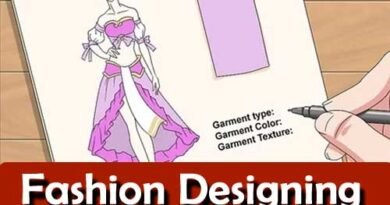Vegetable Printing Ideas
Fabric Painting Designs Ideas in Fashion Design that you could try at Home
When you are bubbling with ideas to make your garments look beautiful, make a unique statement or simply be more stylish fabric painting design ideas come in handy.. It makes uninteresting garments come to life. The garment is your canvas and painting, the art with technique. Fabric painting design is all about the motifs you design, the paints you use, sketching skills and what fabrics to use. You don’t have to try fabric painting on new fabrics, instead start with the ones that you already own. If there is a solid t-shirt or a plain kurta, pep it up with some painting and see it come to life.
Fabric painting is time taking and requires close attention to detail. Even if you want to do abstract fabric painting, it’s better to start with a blueprint. Knowing the placement will help you align your motifs and designs better. You could start your fabric painting project with acrylic colours. These are great for beginners and are also easy to use while giving good results. With help of your vivid imagination and creativity, you can pep things up with art, refreshing the garments. Let’s discuss a few ideas for great fabric painting, giving good technique to the exhilarating activity falling in the domain of fashion designing.
Table of Contents
- The Basics
- The Clothes
- The Painting
The Basics
In fabric painting, a few important factors need to be paid due attention to. The selection of the paint is one. Acrylic paints are a really good option for beginners and others alike. These colours are long lasting and will rarely fade off when washed. Acrylic paints are available in a variety of colours to start with. Another is the variety of cloth that is to be painted. Every fabric comes with different qualities, properties and weave patterns. Fabric painting design is possible on selective ones only.
- All fashion design courses discuss these basic factors as part of discussing dyeing techniques. When it comes to choosing the dye to paint a garment with, you should identify the garment for its 3 types.
- For cellulose fibres, that include cotton, linen and hemp, a fibre reactive dye works just right. A pre-wash soaking of the garment using soda ash makes the dye and painting results stable.
- For protein fabrics including wool, silk and alpaca, it’s necessary to use an acid dye with protein fibres.
- For synthetic fibres viz. rayon, polyester, nylon and acrylic, an all-purpose dye will work with an after-dye wash.
The Clothes
Cotton is the best bet if you are a beginner at fabric painting to get some satisfying results. Any other garment type needs more care and experience that helps handle painting on them. Acrylic paints work well on cotton fabrics. This will allow for more intricate designs and better colour combinations.The painted fabric must be wrinkle free and clean for best results. Keep the fabric damp before painting so that there’s a neat flow of colours on application. It should not be soaking wet, which will absorb all the paint. If the fabric is too damp, the acrylic paint might get blotchy, resulting in an undesirable final look.
The Painting
Fabric painting is done by hand-painting or stamping. You sketch the design, which is traced or reproduced on the fabric with fabric painting pens, fabric painting tubes or paint dots. Before finalizing your design, you can make changes to avoid any alterations once you start working on a fabric. It’s easier to change on paper than while painting it on a fabric.
The paint that suits the garment best is chosen. Usually acrylic paints tend to work well for different types of fabrics. The painting method used could vary from simple strokes to varieties including watercolor, oil painting and charcoal. The techniques used in fabric painting will differ based on your motif design and overall look of it. Embroidery designs can also be used for fabric painting.
The painting itself is a delicate task. In stamping, a design cut out from a solid base is dipped in color and pressed onto the garment. A design cut inside a solid base is placed on the garment and airbrushed or brushed over the board, leaving the design painted on the fabric. Post painting, the paint should be left to dry. Ironing the painted fabric from behind will place the color permanently on the fabric.
A good amount of practice at fashion designing training sessions helps you master fabric painting. Look for fashion designing institutes where the art of fabric painting is taught in painstaking detail. You can get better at fabric painting with more practice. Once you master it, you could play around with different painting techniques and improve your fabric painting skills further.
Fabric painting ideas we have shared here are just to get you started. It’s worth it to formally train in the craft so
that you make some impactful designs that set the style going for you.


